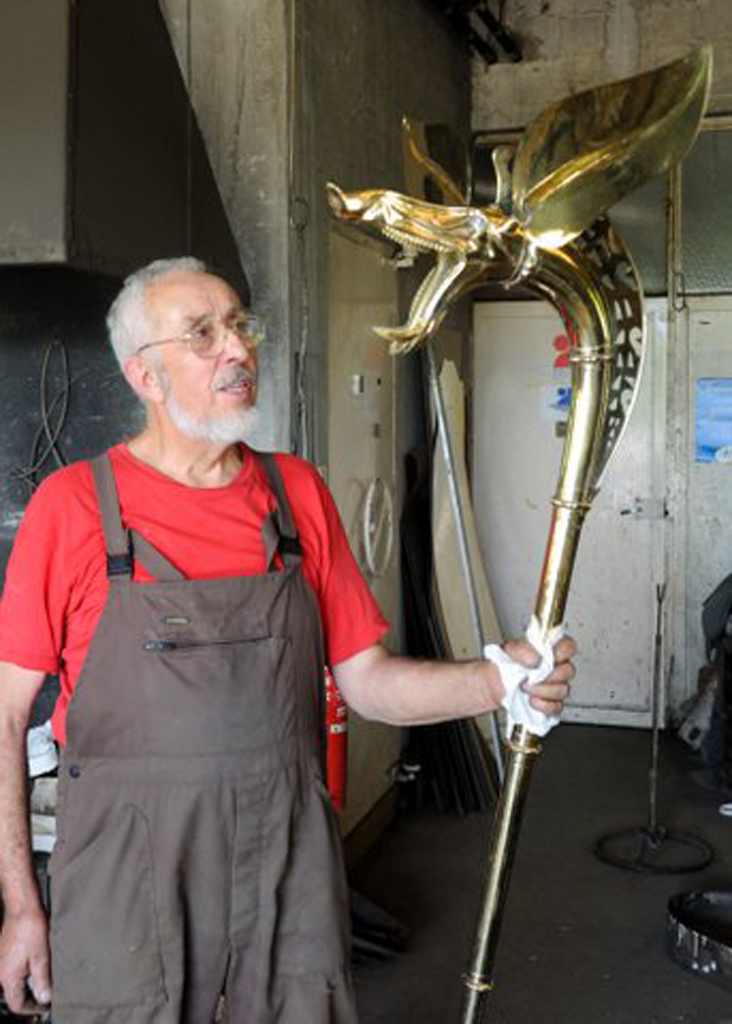Jean Boisserie is undoubtedly the most highly regarded dinandier (coppersmith)in France. Born and raised in the beautiful Dordogne region, he has maintained his workshop in the village of Cublac, on the outskirts of Terrasson-Lavilledieu since 1966. He is a master craftsman who works exclusively by hand-raising copper from flat sheet, laboriously hand-hammering the metal to produce objects ranging from the miniscule to industrial scale. He also works with precious metals and goldsmithing techniques.

Originally he qualified as a boiler maker and despite gaining qualifications to progress his career he fell in love with copper and now his passion is copper crafting. Over the years through public demonstrations Jean gained an amazing reputation and recognition for his work.
He also has a passion for music archaeology, and has worked extensively with museums and archaeologists to reconstruct objects from antiquity, including 6th Century Merovingian bells and singing bowls. In 2004 he was invited to join a team of archaeologists to study six instruments which were part of a Celtic horde discovered at the Sanctuary of Tintignac, in the Correze region of France and to make a reproduction of the most complete of these.
As he worked from graphic representations the reconstructions he made of these objects were approximate and not particularly interesting. With the use of 3D data he was able to create an object much closer to the original than previously achieved. The first reconstruction was made in brass, as Jean had never worked with bronze leaf before. In 2008 he was invited to join the Music Archaeology Project. Working with the trombonist and carnyx player John Kenny, he was commissioned to make the first bronze reconstructions of the Tintignac carnyx and Etruscan Cornu. Not only has he recreated these fabulous instruments, but he has given many lectures on the reconstruction of them throughout Europe.
Currently Jean is working on the reconstruction of an extraordinary ceremonial helmet in the form of a long necked bird which was found in the Tintignac horde. His passion and enthusiasm are as strong as ever.





